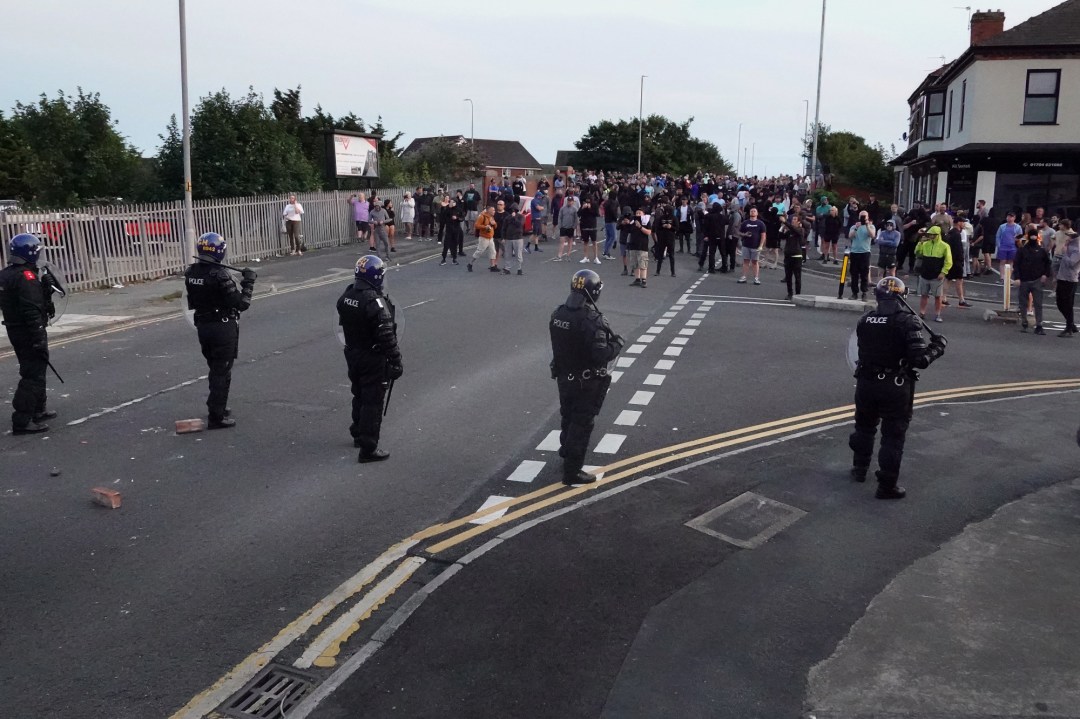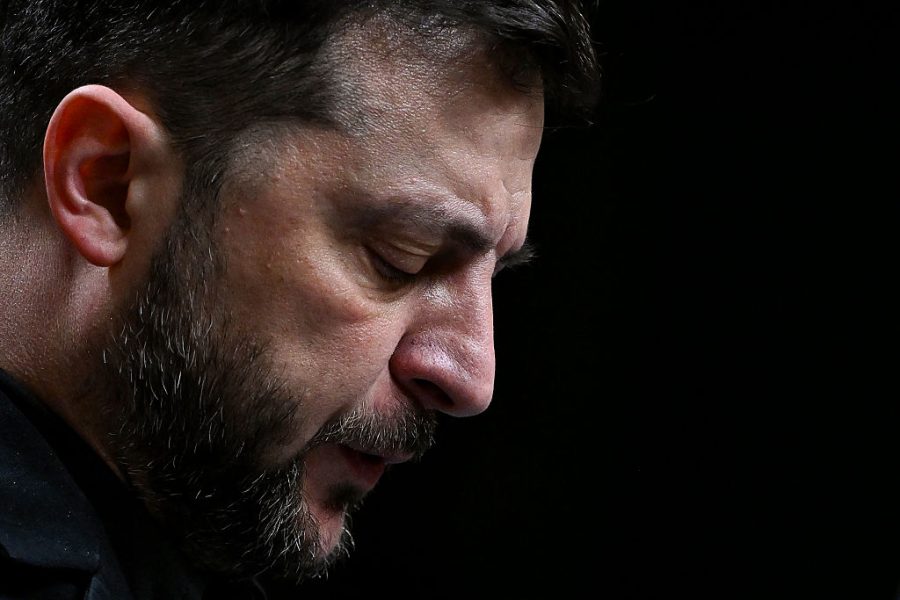What really caused the countrywide unrest after the Southport massacre last summer? Last week, a report by His Majesty’s Inspectorate of Constabulary and Fire & Rescue Services (HMICFRS), shed a much-needed light on this vital question.
This was the second part of HMICFRS’s inspection of the police response to the public disorder that followed Axel Rudakubana’s attack on a dance class in Southport on 29 July, which killed three little girls. The first part looked at police preparedness; tranche two focuses on police use of intelligence as the disorder unfolded, its subsequent crime investigations, and the role of social media.
The bulk of the media coverage has so far focused on the latter, with headlines about the police response to ‘social media risks’ and ‘countering fake news’. Such concerns reflect the official explanation for the disorder, preached with fire and brimstone by Sir Keir Starmer from his No. 10 pulpit during the unrest.
Three days into the disorder on 1 August, the Prime Minister told the country that the unrest we were seeing was the work of ‘gang[s] of thugs’ who had travelled to ‘a community that is not their own’ to smash it up; ‘far-right thugs’ would become his mantra. He also said the violence was ‘clearly whipped up online’, prompting a fierce crackdown on online speech. Even Department for Education guidance from late August followed this narrative. In a post suggesting how to how to talk to schoolchildren about what had happened, the department wrote that, ‘rioting coordinated by right-wing extremists was initiated by the spread of misinformation about the perpetrator of the Southport attack resulting in violent, racist and Islamophobic attacks on our communities by extremists’.
Yet this police inspectorate report has brought that narrative spectacularly crashing down. The HMICFRS finds ‘no conclusive or compelling evidence that the 2024 disorder was deliberately premeditated and co-ordinated by any specific group or network’.
Moreover, ‘most people who took part in the disorder lived locally’. Far from being hardened EDL skinheads, few had been convicted of disorder before, and their ages ranged from 11 to 81. ‘The murders of three young girls in Southport triggered these events’, it notes. But, far from being down to far-right organising, ‘they turned into widespread and often serious disorder because of many other complex factors’.
Should those factors not have been obvious? Hadn’t we been hearing for years that those towns and cities that saw riots – among them Middlesborough, Blackpool, Hull and Rotherham, all of which have endured the horrors of rape gangs – were downtrodden, ‘left behind’ parts of Britain? But in the political hysteria of those febrile days, this shallow reservoir of sympathy evaporated in an instant. No sympathetic sociological explanations for the riots were offered, as they had been in 2011. For the prime minister, who had kneeled after violence at BLM riots, it was ‘not protest’ and ‘not legitimate’.
In starkly laying out these deeper reasons for the unrest, the HMICFRS report provides a welcome corrective to how the events of last summer have generally been presented. Still, it arguably places too much emphasis on social media. The police should be ‘better prepared and resourced to monitor, analyse, use and respond to online content’, it says, which it says was a risk to public safety.
But why were rumours about the real identity of the attacker swirling online in the first place? Initially, after all, we had only been allowed to know that the suspect was ‘a 17-year-old male from Banks in Lancashire, who is originally from Cardiff’, and Merseyside Police had insisted absurdly early on that there was ‘no evidence’ that this horrifying mass stabbing constituted terrorism.
Instead of incessantly monitoring everything happening online, perhaps the authorities would be better to just be straight with the public from the outset. The report even quotes Jonathan Hall KC, the government’s terrorism adviser, who for his part lays the blame pretty squarely on the lack of information disclosed by the authorities: ‘In the digital era, if the police do not take the lead in providing clear, accurate and sober details about an attack like Southport, others will. Social media is a source of news for many people and near-silence in the face of horrific events of major public interest is no longer an option.’
A recent Home Affairs Committee report on the disorder, though it has been widely panned for insisting there was no two-tier policing involved and though it fails to cite Hall, draws a similar conclusion. ‘The extent to which dis- and misinformation were a specific driver of disorder is not clear’, it says, with much of the unrest coming down to ‘opportunistic participation driven by social deprivation, rather than social media’. It also criticises the lack of information disclosed to the public by the authorities about the suspect, which ‘created a vacuum where misinformation was able to grow, further undermining public confidence.’
Who or what caused the unrest last summer is not an academic question. The state roared into action off the back of this political narrative. Today, it is becoming increasingly clear that much of this narrative was false – yet people have gone to prison because of it. Lucy Connolly, who is appealing her 31 month sentence this week, is the most prominent example, but there are many others who have been treated very harshly for very little. Grandfather Peter Lynch held a sign and shouted ‘racist and provocative’ remarks at a protest at a Rotherham asylum hotel which later turned violent. He was sentenced to two years and eight months for violent disorder, and in October he was found hanging in his cell.
It may suit Keir Starmer and his allies to maintain that the Southport response was a fascist uprising, but in reality many of those who went to prison were ordinary people with real grievances whose lives have been destroyed. The more we learn about what happened last summer, the crueller and crueller this seems to be.








Comments